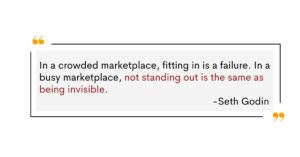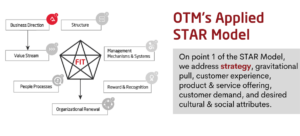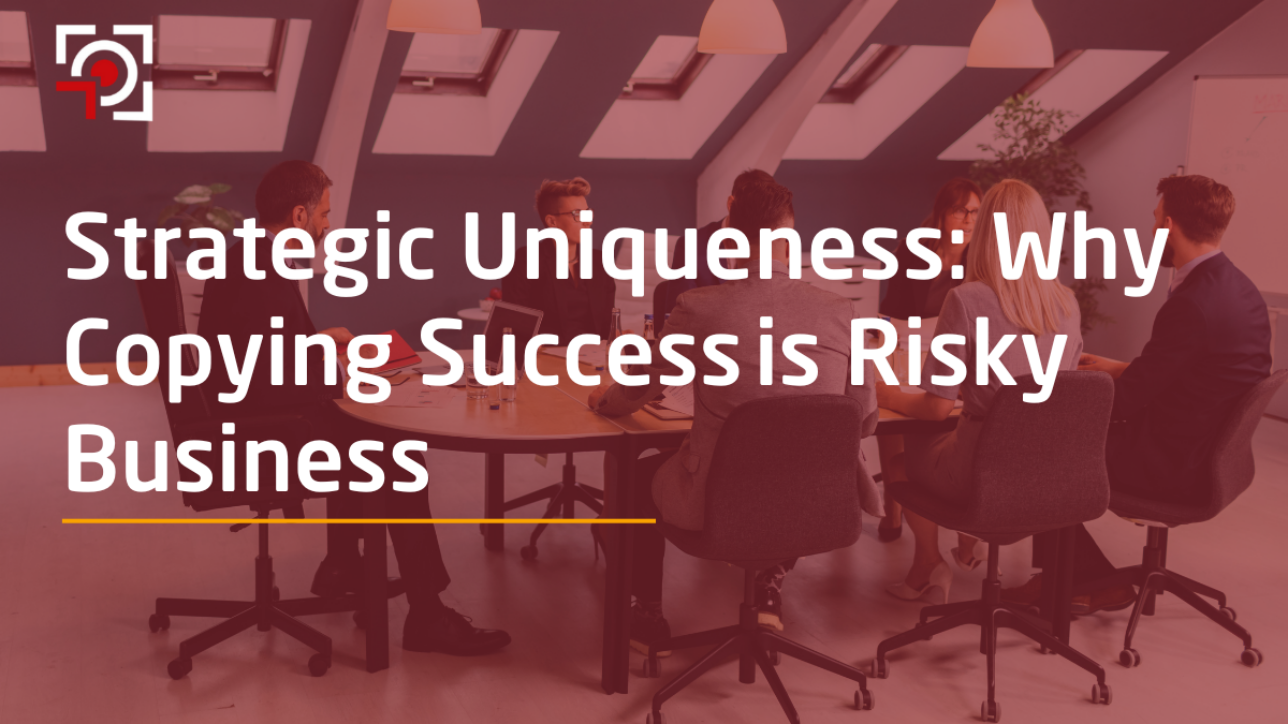Strategic Uniqueness: Why Copying Success is Risky Business
In today’s fast-paced and ever-evolving business landscape, where customers have an ever-increasing array of choices, distinguishing your company from competitors is not just a luxury. It’s a necessity. This is why strategic uniqueness has emerged as a critical driver of success.
What Exactly is Strategic Uniqueness?
Strategic uniqueness is how a company chooses to differentiate itself from its competitors through its unique combination of strategies, assets, and capabilities. This can range from innovative products to exceptional service, or even a distinctive company culture. It is about creating an offer that is not only different, but that is also valuable to the customer and difficult to copy.
Critical Components of Strategic Uniqueness
- Differentiated value proposition. At the heart of strategic uniqueness is the ability to create a differentiated value proposition by offering products, services, or experiences that are distinct from those of your competitors. This differentiation can be based on quality, price, design, brand, innovation, customer service, or any other dimension that matters to customers.
- Core competencies. These are the unique strengths and capabilities that set your business apart. What can you do better than anyone else? Is it specialized skills, ground-breaking technologies, efficient processes, or a highly talented workforce?
- Innovation. Companies that embrace innovation (e.g. continually invest in research & development, explore new market niches, or experiment with novel business models) are more likely to stand out from the crowd. Innovation can be product– based (think Apple iPhone) or service– based (think Airbnb’s model of accommodation sharing).
Standout Examples of Strategic Uniqueness
- Dyson. Dyson focuses on innovative design and technology, making its products distinct and desirable.
- Apple – product differentiation. Known for its innovative products and ecosystem of hardware, software and services, Apple has successfully differentiated itself through design, technology, and a unique user experience.
- IKEA – cost leadership with a twist:. This global furniture brand stands out because of its affordable, flat-pack furniture, a wide range of stylish functional products, and a unique shopping experience, demonstrating a successful combination of cost leadership and differentiation.
- Tesla – innovation and brand. Tesla revolutionized the car industry by combining cutting edge technology, a focus on design, and a commitment to sustainable energy.
- Patagonia. This outdoor apparel brand stands out through its commitment to environmental sustainability, appealing to a niche demographic of ‘eco-conscious’ consumers.
- Zara - fast fashion and supply chain. Zara achieved strategic uniqueness by being at the forefront of the fast-fashion model. They shortened supply chains, rapidly introduced new styles, and leveraged customer data to stay ahead of trends, setting them apart from traditional fashion retailers.
- Starbucks – a unique ‘third place.’ Starbucks is not just a coffee shop. They have created a unique ‘third place’ experience between home and work, focusing on atmosphere and customer experience.
Risks of Replication
Strategic uniqueness could just be that one occasion when imitation is not the highest form of flattery! When it comes to your business strategy, it’s actually quite the opposite. Copying another company’s strategy, although tempting, is a risky business that should be avoided at all costs. Here’s why:
- Misalignment with your unique strengths. Each business has unique strengths and weaknesses. By copying another’s strategy you may be sub-optimizing your own unique strengths and capabilities.
- Different market dynamics. Context matters! Markets differ in terms of demographics, preferences, and behaviors. A strategy successful in one market may not translate well to another.
- Stifling innovation. Relying on copied strategies can lead to a stagnation of creativity in your business, limiting long-term growth and adaptability, and frustrating good employees.
- Diluting your brand. Imitation can dilute your brand’s uniqueness, making it less distinguishable in the marketplace and causing customers to become confused. You may even unwittingly direct your customers to the competition if your offer is not differentiated enough!
- Cultural misfit. Organizational culture plays a crucial role in strategy execution. Just because a strategy works well in one cultural setting doesn’t mean it will fit with yours.
- Customer skepticism. Customers are discerning. They will likely see through a lack of authenticity and innovation. This damages trust and loyalty.
- Speed of change. In dynamic environments, strategies need to be agile and responsive. Copying a strategy will not provide you with the flexibility you need to remain competitive. You will always be playing catch up.
Below are just two examples of companies that have fallen foul to the perils of copying the strategy of their competitors:
- Xerox and the PC revolution. Xerox famously failed to capitalize on its own innovations in the PC space, partly because it tried to replicate the successful strategies of its core photocopier business, which didn’t translate well to the emerging PC market.
- Quibi’s streaming service failure. Quibi attempted to replicate the success of streaming services like Netflix and Hulu, but it didn’t account for the unique aspects of the mobile-first approach, leading to its downfall.

What Should You Do Instead?
A more effective approach is to understand the critical components that make up successful strategies and adapt them to fit your unique business context. You must start by first being very clear on your own unique strategy. Even the most beautifully crafted strategy, however, is nothing without brilliant execution. Your operating model really is the bridge between strategy and operationalization.
So how can you better identify and nurture your strategic uniqueness effectively? By working your way around a tried and tested framework like the OTM applied STAR model, you can successfully navigate a path to success.

- Business direction. Define your path starting with a clear business direction. What is your mission and vision? What market discipline will you lead with (we call this gravitational pull)? What intentional choices and trade-offs will you make? What core internal capabilities will you need to build? What is your distinct product and service offering? What markets will you operate in? Just as important, what markets will you not operate in? What should future values and behaviors look like?
- Value stream. Michael E. Porter is renowned for his work on competitive strategy. Porter emphasizes the importance of competitive advantage through distinctiveness. An critical component of competitive advantage is the ability to identify and define activities that create value for the customer and those that do not. By optimizing the value stream, your business can create unique value that will distinguish you from your competitors. What activities can you do better than anyone else? What key decisions are associated with those activities? What activities would your customers be happy to pay for if they knew you were doing them?
- Structure. Let’s be clear here. It’s tempting to jump to the organizational chart at this point, but structure is about way more than boxes and lines! Once you’ve defined the value creating work, how will you organize that work to create the best value? What structural choices will you make? Do your structural choices align with your strategic uniqueness? What are key jobs, and how will teams and departments be crafted?
- Management mechanisms. You’ve now organized your value creating work into boundaries Great! What mechanisms will coordinate or glue up the boundaries so that they work together seamlessly? Where does decision making authority and governance sit? How will information flow smoothly up, down, and across the operating model? How will technology be used? What leading metrics will you put in place to monitor and improve performance?
- Reward and recognition. How will you reward and recognize performance and behaviors that contribute to your strategic intent? What are the consequences for behaviors that go against your company’s values?
- People processes. How will you align your business direction with the employee life cycle? This includes recruiting, onboarding, performance management, development, and exiting.
- Organizational renewal. Organizational renewal is the direct consequence of the choices you make around the OMT Applied STAR. How will ways of working need to change? How will mindsets and organizational patterns need to shift? How will you engage teams and keep them engaged? How will you foster a culture that values and reinforces your strategic uniqueness?
Buyer Beware!
If you are working with consultants or partners who are driving an ‘expert’ approach by pushing the ‘best practices’ of other organizations, just take a moment to step back. Question how you can use your unique combination of strengths, capabilities, and assets to forge your own path.
The Significance of Your Uniqueness
Although drawing inspiration from the success of others is understandable, strategic uniqueness is about recognizing and capitalizing on what makes your business unique in a way that will resonate with your target market. There are no short cuts. The path to strategic uniqueness requires a deep understanding of your own business, knowing what you do best, and a ruthless focus on adaptability and innovation. By focusing on what sets you apart, you will create a strategy that is truly yours.
I’ll end with an oft quoted wisdom, “Be yourself; everyone else is already taken.” – Oscar Wilde
About The Author:
Dawn Powell is an Organization Design Consultant with over 10 years’ experience of working in Organization Development and Design. In her work, Dawn enjoys ‘anything that enables people to connect’ and takes pride in remaining curious about how systems can be transformed through Organization Design.
Source:


